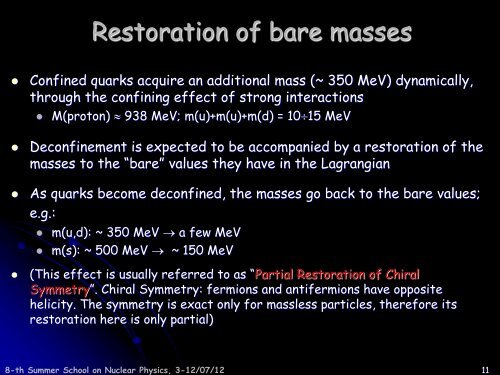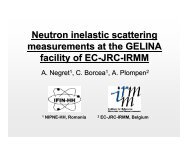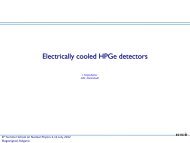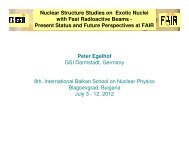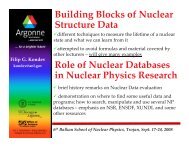Introduction to Heavy Ion Physics
Introduction to Heavy Ion Physics
Introduction to Heavy Ion Physics
You also want an ePaper? Increase the reach of your titles
YUMPU automatically turns print PDFs into web optimized ePapers that Google loves.
8-th Summer School on Nuclear <strong>Physics</strong>, 3-12/07/12<br />
11<br />
Res<strong>to</strong>ration of bare masses<br />
• Confined quarks acquire an additional mass (~ 350 MeV) dynamically,<br />
through the confining effect of strong interactions<br />
• M(pro<strong>to</strong>n) 938 MeV; m(u)+m(u)+m(d) = 1015 MeV<br />
• Deconfinement is expected <strong>to</strong> be accompanied by a res<strong>to</strong>ration of the<br />
masses <strong>to</strong> the “bare” values they have in the Lagrangian<br />
• As quarks become deconfined, the masses go back <strong>to</strong> the bare values;<br />
e.g.:<br />
• m(u,d): ~ 350 MeV a few MeV<br />
• m(s): ~ 500 MeV ~ 150 MeV<br />
• (This effect is usually referred <strong>to</strong> as “Partial Res<strong>to</strong>ration of Chiral<br />
Symmetry”. Chiral Symmetry: fermions and antifermions have opposite<br />
helicity. The symmetry is exact only for massless particles, therefore its<br />
res<strong>to</strong>ration here is only partial)


